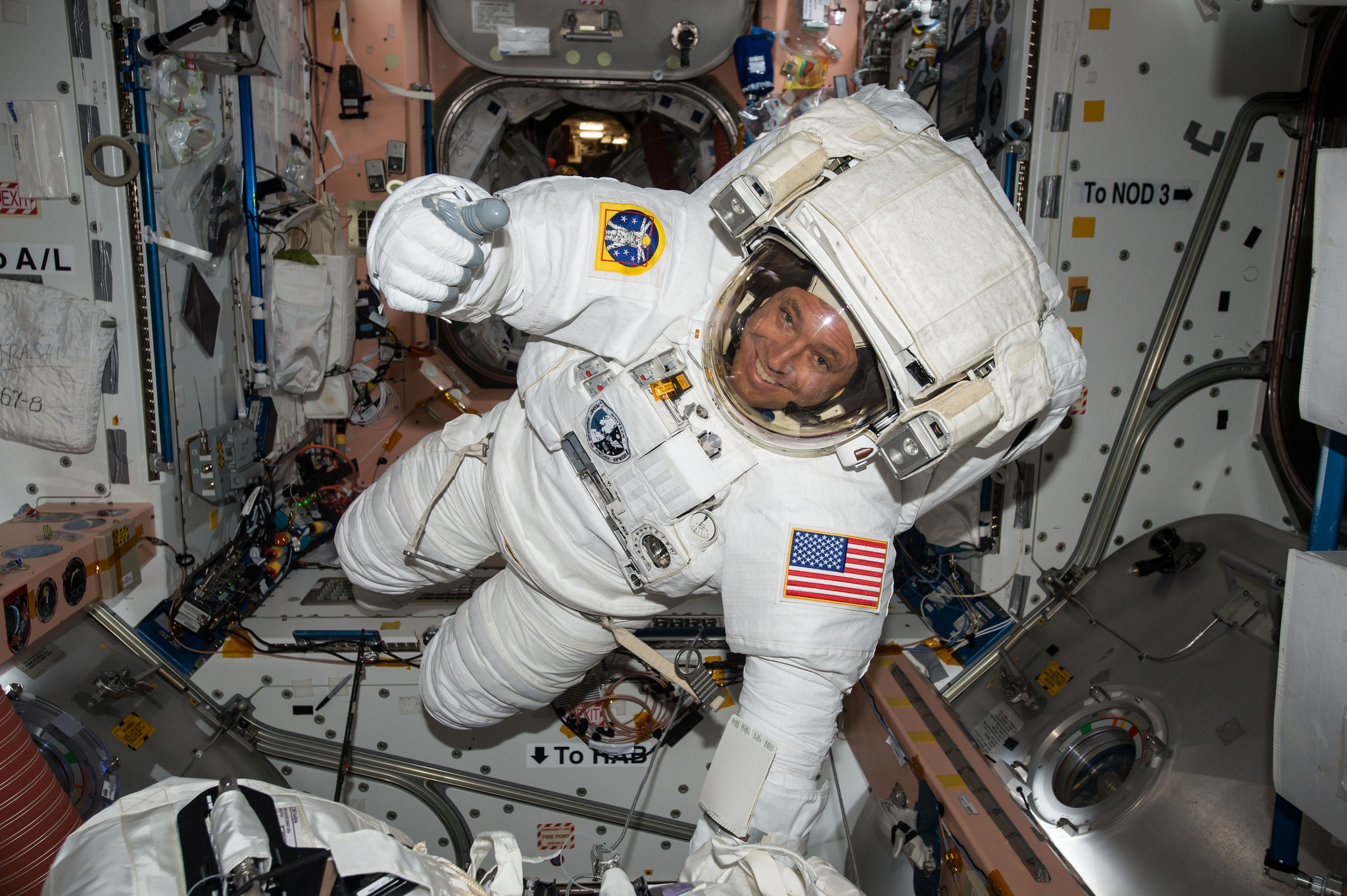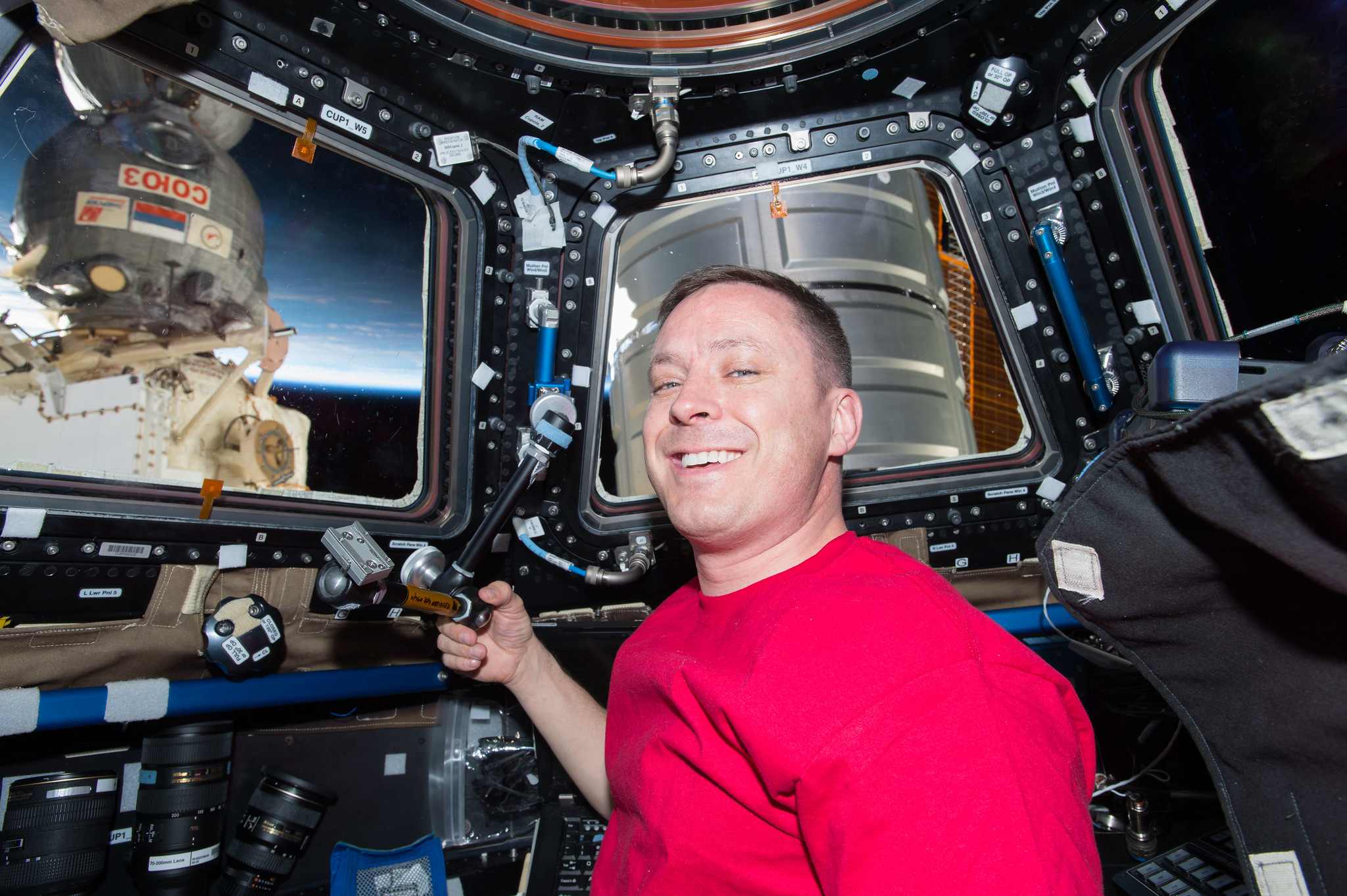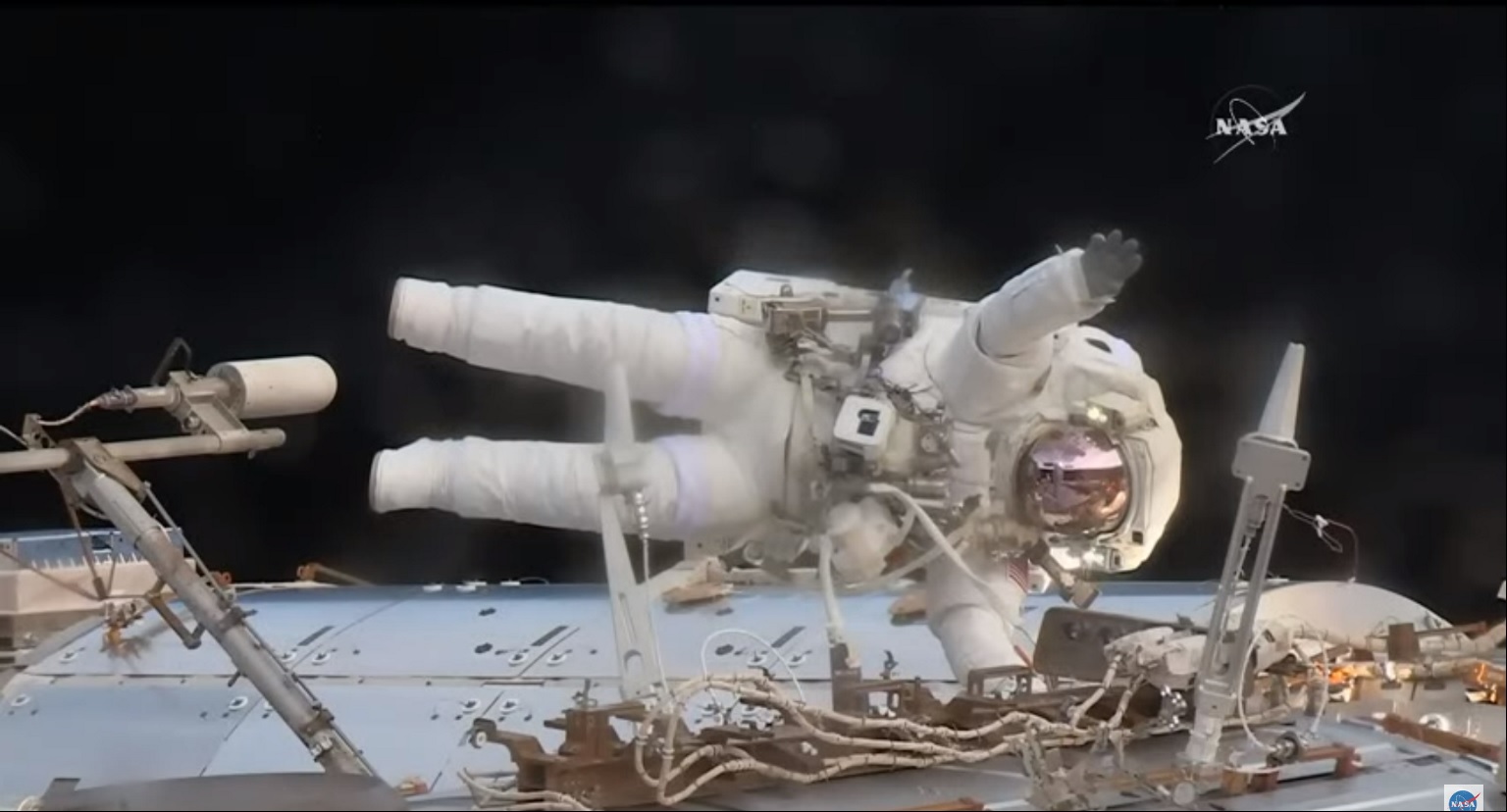Astronaut Jack Fischer talks spacesuit challenges and the International Space Station in 'Virtual Astronaut' panel

A retired NASA astronaut will discuss how the International Space Station helps us model good teamwork on Earth, in an online panel discussion Friday (Oct. 30).
Expedition 51/52 astronaut Jack Fischer will participate in the panel discussion by The Virtual Astronaut series, which is bringing online talks by astronauts to the general public. The panel discussion will review the importance of 20 years of continuous human occupation on the International Space Station (ISS), and will be moderated by collectSPACE.com founder and Space.com contributor Robert Pearlman. You can buy tickets here.
Fischer, who is also a retired United States Air Force colonel, said that he found the ISS was helpful in bringing a greater value to cooperation even amid international disagreements.
Related: Extreme space cuisine! Astronaut whips up 'bite-size yumiosities' in orbit
While Fischer did not cite specific examples, one prominent recent incident was a 2014 comment by then Russian deputy prime minister Dmitry Rogozin suggesting the U.S. should use trampolines to reach space. This comment was a dig against the U.S. relying on Russian Soyuz spacecraft for crew transportation to and from the ISS in between the retirement of the space shuttle in 2011 and the start of commercial crew missions this year. Rogozin was also angry concerning sanctions the Americans put in place against Russian officials after his country's invasion of Crimea earlier that year.
"Abstracting the value that people have to each other is what is most important," Fischer said of the ISS, whose research and missions continued uninterrupted despite the spat between the largest space station partners. "You have a conversation. When there are disagreements, we can talk to each other. We can step back and know that what's truly important, and what is at the core of our being, is the same. We can get along, and we can do great things." He added this approach should also work within the United States, even amid divisions of different interest groups.
Get the Space.com Newsletter
Breaking space news, the latest updates on rocket launches, skywatching events and more!
Fischer was selected as an astronaut in 2009 and spent much of his first six years at NASA helping to develop the spacecraft making the news today: the SpaceX Crew Dragon that ferried the first commercial crew to space earlier this year, the Boeing Starliner that is also expected to start commercial crew missions in the near future, and the Orion spacecraft that NASA hopes to send around the moon in 2021 in preparation for its first crewed mission in 2023.
Then Fischer moved into a nearly three-year training cycle in 2014 for his own space mission, which launched in 2017. Most of that time was spent in Russia training to be a Soyuz pilot, he said, with the rest of the training focused on acquiring generic skills in spaceflight for skills like robotics, science and spacewalks. "You're not really sure what's going to meet you when you get up there," he said. "A cargo vehicle could explode. Things break. So you need to be a generalist to adapt to the situation when you get there."

Fischer encountered the unexpected during his first spacewalk in 2017, then listed as the 200th extravehicular activity, or EVA, in support of the ISS. One of the service and cooling umbilicals that charge the spacesuit batteries developed a small water leak while the astronauts were getting ready to leave the ISS.
Normally, each participating astronaut of the two-person spacewalking team receives an umbilical, but only one umbilical was working. With only one available, the spacesuit batteries couldn't be charged fully in the preparation time the team had left, so they readapted the tasks to what ended up being a four-hour spacewalk instead of the usual six.
That started with getting the astronauts out the door safely.
"Peggy [Whitson] and I were stuck in our suits to the wall, like little flies in a web, and Tomas [Pesquet] basically was Mighty Mouse, zooming all over the place working with the ground and finding a solution," Fischer recalled.
Pesquet, a European Space Agency astronaut, was the intravehicular crew member who assisted the spacewalking astronauts with everything EVA-related, and Fischer said he was the hero of the day in helping the two NASA astronauts in their final preparations. "Tomas did a whole lot of reconfigurations, and he would go back and forth putting the [working] umbilical on me, and then on Peggy," Fischer said.
Related: French astronaut Thomas Pesquet's amazing photos from space (gallery)

During the last part of depressurization when the inner door to the airlock was closed to Pesquet and the rest of the ISS crew, he added, Fischer received the cooling umbilical until they could open the outer door to space. Whitson, Fischer joked, would not heat up as quickly because her calm demeanor made her behave a lot like the martial artist Chuck Norris, but in space. "If anything, Peggy is just tough grit and it was through Tomas' heroic efforts that we got that EVA."
Fischer said his crew wanted to emphasize the ground team's efforts while they were in space, and this even came down to designing the traditional crew poster that promotes space station missions. The Expedition 52 crew asked ground workers around the world to pose individually in white, green or blue shirts and to have the same color background in each picture.
"We made a mosaic of the Earth with hundreds of these pictures to show it was one team exploring together," Fischer said. "What was so cool was that every day, they would send up this huge schedule that's planned down to five-minute increments, with an amazing amount of science."
In preparing for the panel discussion on Friday, Fischer received a question from moderator Pearlman asking if it was easier for him to be on a later space station mission focused on science, or if he would have preferred flying during a construction-heavy earlier mission.
"For me, I love checking boxes and getting stuff done, so it [my mission] was great. Between Peggy and me, we just ate it up. The ability to get that science done and push the bounds of human knowledge was an addictive drug that we got to do every day, and it was so exciting to be a part of a team that could accomplish so much. It only succeeded because there were so many people working in concert to make that happen."
Fischer's talk will be in support of Houston's MD Anderson Cancer Center, who treated his daughter Bethany for papillary thyroid cancer when she was a teenager. "She had cancer, and those were the folks that cured her," he said.
While in space in 2017, Fischer donned "Unity," a patchwork costume spacesuit decorated by children with cancer in the U.S., Russia, Germany, Japan, and Canada, all countries who are ISS partners. Spacesuit developer ILC Dover pieced together the spacesuit, which was a collaboration with the Spacesuit Art Project that encourages children around the world to use space art to get through difficult circumstances. NASA astronaut Nicole Stott is co-founder of the project and will be on Friday's panel, along with Fischer.
For more info on Astronaut Jack Fischer click here.
Follow Elizabeth Howell on Twitter @howellspace. Follow us on Twitter @Spacedotcom and on Facebook.
Join our Space Forums to keep talking space on the latest missions, night sky and more! And if you have a news tip, correction or comment, let us know at: community@space.com.

Elizabeth Howell (she/her), Ph.D., was a staff writer in the spaceflight channel between 2022 and 2024 specializing in Canadian space news. She was contributing writer for Space.com for 10 years from 2012 to 2024. Elizabeth's reporting includes multiple exclusives with the White House, leading world coverage about a lost-and-found space tomato on the International Space Station, witnessing five human spaceflight launches on two continents, flying parabolic, working inside a spacesuit, and participating in a simulated Mars mission. Her latest book, "Why Am I Taller?" (ECW Press, 2022) is co-written with astronaut Dave Williams.
